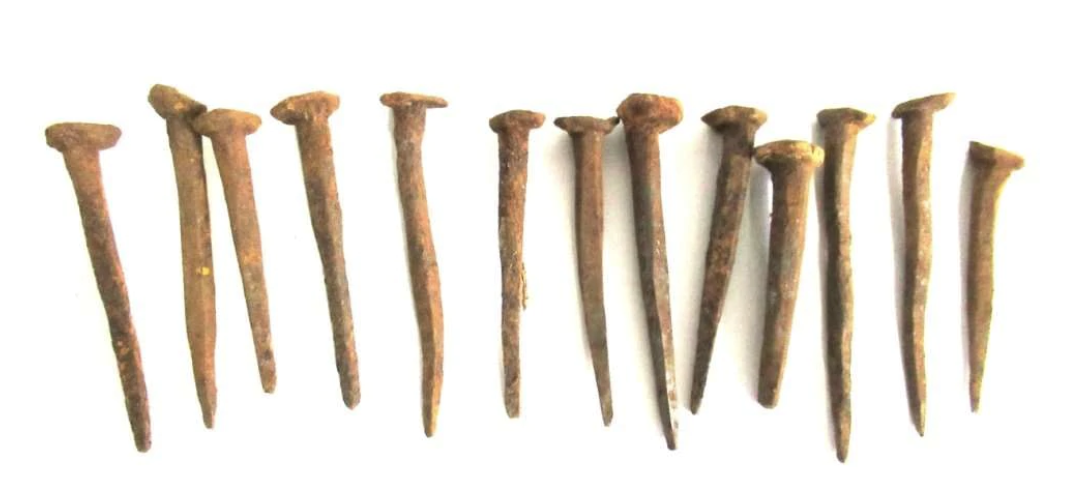Alive: 21 Reasons to Believe in the Resurrection of Jesus ChristSample

Reason 1: Jesus died
In order for Jesus to rise from the dead, He had to first die.
The night before His crucifixion, Jesus went to the Garden of Gethsemane with His disciples to pray. His anxiety is so great that He begins to sweat drops of blood, a medical condition called hematidrosis. Jesus is then betrayed by Judas Iscariot, a covert pretend friend. Judas had been stealing from Jesus for years, while plotting His murder with religious and political leaders. Beaten all night, exhausted, and dehydrated, Jesus is then scourged by a flagrum (also called a cat of nine tails). It was comprised of a handle from which straps of leather would proceed, with stone or metal ball to tenderize the human flesh so that the hooks could then sink into the deep tissue, and even organs or bones, of the victim. The flesh would be repeatedly ripped off the victims’ shoulders, back, buttocks, and legs–sometimes breaking a rib off the body as well–in what some doctors compare to a shotgun blast.
Jesus’ bloodied and traumatized bare back and shoulders were then forced to carry His roughly hewn wooden cross to His place of crucifixion. If Jesus carried the entire cross, it would have weighed a few hundred pounds, and many think it is more likely he carried just the crossbar (patibulum), which would have been around one hundred pounds. Despite his young age and good health, Jesus was so physically devastated from His sleepless night, miles of walking, severe beating, and scourging that He collapsed under the weight of the cross, unable to carry it alone through the narrow streets of the Old City of Jerusalem filled with shoppers. Doctors have said that the trauma from the heavy crossbar crushing His chest into the ground could have caused a bruised heart, similar to the chest trauma caused by a car accident without a seatbelt where the driver is violently thrown against the steering wheel. Unable to continue carrying His cross on the roughly one-mile journey to His execution, Simon of Cyrene was appointed to help carry Jesus’ cross. Upon arriving at His place of crucifixion, they pulled Jesus’ beard out—an act of ultimate disrespect in ancient cultures—spat on Him, and mocked Him in front of His family and friends. A crown of thorns was then placed on Jesus’ head to mock Him as King of Kings and Lord of Lords.
Imagine a long wooden stake being run through a person’s midsection, and that stake then being driven into the ground, with the impaled person left to die slowly over the course of many days. The Romans perfected crucifixion, reserving it as the most painful mode of execution for the most despised people. The pain of crucifixion is so horrendous that a word was invented to explain it—excruciating—which literally means “from the cross.” Crucifixion was painfully slow death by asphyxiation for the crucified, passing in and out of consciousness often for days on end.
None of this was done in privacy, but rather in public places. It would be like nailing a bloodied, naked man above the front entrance to your local mall as state sponsored terror. People were likely crucified at eye level, looking their mockers in the face as they sweated in the sun, bled, and became incontinent from the pain.
Jesus died praying for people that hated Him. Jesus breathed His last and died crying out, “It is finished”. To ensure Jesus was dead, a military executioner ran a spear through Jesus’ side, which punctured his heart sac, and water and blood flowed from His side. This is evidence that Jesus died of a heart attack; the sac around the heart filled with water until the pressure caused Jesus’ heart to stop beating. Jesus died with both a literal and metaphorical broken heart. On the cross, Jesus took your place and put you in His place. He died, so that you could live. He was cursed, so you could be blessed. He was separated from the Father, so you could be reconciled to the Father. All of this was done to Jesus, but for you, “God made Christ, who never sinned, to be the offering for our sin, so that we could be made right with God through Christ” (2 Corinthians 5:21).
Jesus was dead. Jesus’ dead body was then wrapped in upwards of a hundred pounds of burial linens and spices and laid in a cold tomb hewn out of rock without any medical attention for three days.
The author of Hebrews says that Jesus is our "High Priest who is able to sympathize with us". How does contemplating Jesus' suffering for you on the cross give you faith that by His strength you can endure suffering? Spend time thanking Jesus for His sacrifice.

Scripture
About this Plan

Without debate or contest, the resurrection of Jesus Christ is by far the most important event in all of human history. Jesus Christ defeated death, forgives sin, and proves He’s God. In this plan, we explore 21 reasons why you should believe in Jesus' resurrection.
More
Related plans

Sound of Heaven: A 6-Day Devotional by Danny Gokey

Esther’s Legacy: Embracing Your Role in God’s Sovereign Plan

Everyday Gospel: A Daily Devotional Connecting Scripture to All of Life

The Treasure I Married: A 3-Day Marriage Plan

Laying Hold of a Divine Perspective: A 3-Day Marriage Plan

In Her Image: Character Study of the Proverbs 31 Woman

Acquiring Discernment

The Familiar Stranger

Desperate Prayers for Hope in Hard Times
